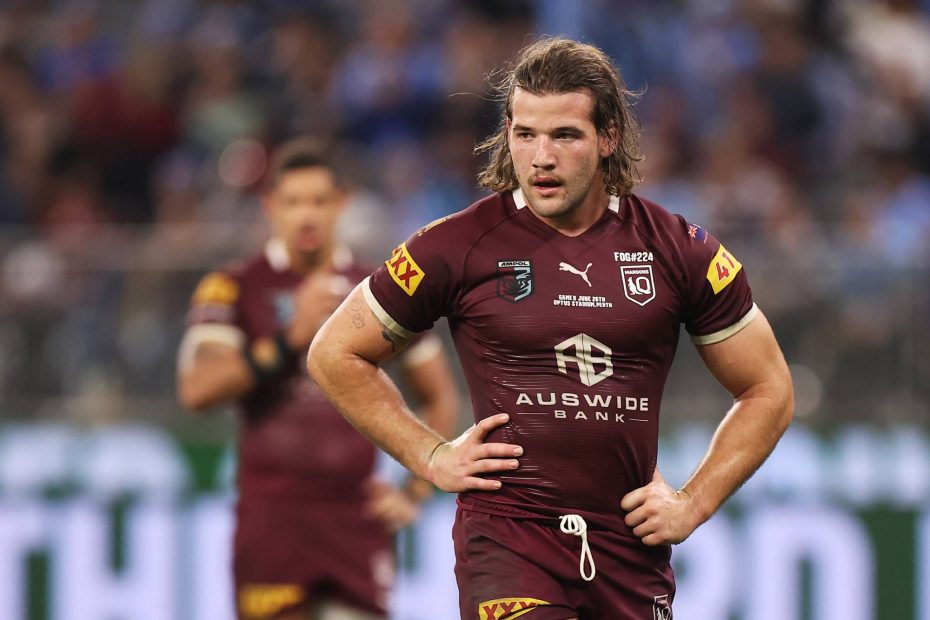Despite the ever evolving nature of the role of forwards in the game of rugby league, their job remains somewhat fundamental.
Whether thundering through the middle or playing a little wider on an edge, the numbers eight through 13 are charged with carting the ball forward, attempting to dent, tire and break defensive lines, as well busying themselves in defense and nullifying opposition players keen to do the same.
Of course, there are stats for both of these endeavours; average tackles and metres gained.
It struck me that combining the two might provide an insight into exactly who are the hardest working big men in the NRL, and perhaps expose a few others who might not exactly be pulling their weight on a week to week basis.
After three hours of combing the stats and cross refencing the data from the top 50 on the metres gained metric and the most prolific tacklers in the game, the results are interesting and mostly supportive of the forwards generally respected and admired in the game.
To arrive at the figures, I excluded backs, halves and hookers, focusing purely on the engine room. The results outlined below are set out in the following format, (26.1, 112m), where the player in question is averaging 26.1 tackles per game and 112 running metres, for a total TM (tackle + metres) stat of 138.1.
Top of the pops after six rounds of the NRL is Brisbane’s Patrick Carrigan (38.5, 191m). His total score of 229.5 is well clear of the next best and highlights his value to Kevin Walters’ team and Queensland.
Patrick Carrigan will once again be an Origin star in 2024. (Photo by Mark Kolbe/Getty Images)
A man that might surprise a few takes second place on 207. Canberra’s Joseph Tapine averages a little over 30 tackles per game and just over 176 metres per match in what has been a stellar start to his season in terms of work rate.
Addin Fonua-Blake is third on a TM of 203, with run metres exceeding 177 per match for the Warriors. Team mate Tohu Harris sits fourth on 198 (41.0, 157.8) and Victory Radley is fifth (36.8, 159m) with his indefatigable defence work ranking him the 12th busiest forward in the league when it comes to tackling.
Coming in sixth is David Fifita (28.0, 166.5m), whilst Isaah Yeo is tied seventh with Payne Haas on a TM of 191. It is worth noting that both Fifita (three games) and Haas (two games) have only small sample sizes for the season and few would be surprised by yet another stat that simply confirms Yeo’s greatness in the modern game.
Interestingly, a number of the men excelling in defensive workloads achieve only a moderate TM score, based on limited running metre production.
Nat Butcher (41.2), Kurt Capewell (39.6) and Jacob Preston (38.0) work tirelessly without the ball yet with average running metres of only 42, 68 and 77 respectively, they fall well short of the class of the field when it comes to a collective figure.
Jacob Preston is one of the Bulldogs’ best on a week to week basis. (Photo by Cameron Spencer/Getty Images)
And that is the potential validity of such a statistic. Whilst merit will always be given to those who cart the ball effectively and the men who hit, stick and scramble in defence, the ability to do both consistently and in significant numbers might be the best assessment of modern day forwards.
Another Warrior slots into ninth on the list. Mitchell Barnett is having an impressive season thus far and with a total TM figure of 183, is emerging as one of the most valuable toiling forwards in the game.
Rounding out the top ten is Manly’s Haumole Olakau’atu (25.6, 154.8m), a player continuing to grow in NRL stature and with consistent figures in this range, one destined to be feared further as he enters the prime of his career.
There are some mighty impressive names that follow outside the top ten. Based on the total TM metric, Taniela Paseka (171.3), Stefano Utoikamanu (163), Jordan McLean (162), Keaon Koloamatangi (161.6), Jacob Saifiti (156.1), Trent Loiero (156) and Josh Curran (156) all have made impressive starts to the new season.
Junior Paulo may play limited minutes, yet his presence remains important for the Eels. (Photo by Cameron Spencer/Getty Images)
Digging deeper down on the list, players like Josh Papali’i, Tom Burgess and Junior Paulo fall well short of the elite, yet playing minutes must be factored in and perhaps a division of the TM figure by the minutes played could be a means by which players are judged on effective metres or tackles per minute of playing time.
For example, Viliame Kikau sits 73rd on the average running metres list with 110.2 per game. He averages 21.1 tackles. His total TM score of 131.3 divided by the 465 minutes he has played across six games equates to 0.28 effective actions per minute.
As a comparison, Carrigan’s TM score of 229 divided by his 469 minutes gives him a final TM per minute score of 0.48, near double that of Kikau. I’ll stand by what I wrote about the Bulldogs second-rower last week.
It will be an interesting exercise to follow the numbers throughout the season and identify the men not just trying, but really trying when it comes to selfless commitment on the field in 2024.
Carrigan certainly sets the standard right now, yet plenty of big men will be challenging him as the season unfolds.
